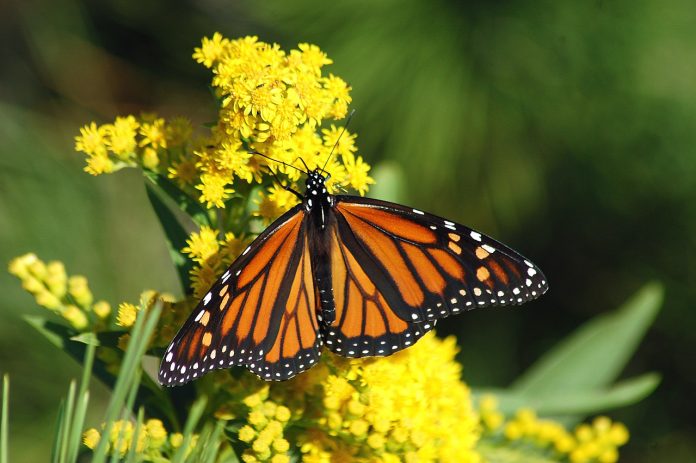In her recent column, Kelly Riley urged readers, “Don’t mow, help the Monarch butterflies,” meaning leave the milkweed for the caterpillars that will become the next generation of migrating Monarchs. While milkweed is important to the survival of Monarch caterpillars — it’s the only host plant these caterpillars will feed on — nectar plants are equally important.
After these caterpillars grow fat on milkweed plants, pupate and eventually emerge as butterflies, they’ll need to prepare for the long migration ahead of them. That means they’re going to need to increase their fat reserves.
Nectar plants
The flight to Mexico is long and grueling. Traveling from the northern United States and Canada, Monarch butterflies try to make most of the trip by soaring on favorable winds, reducing the need to burn fat reserves. When the weather isn’t ideal for traveling, they stop to rest and feed, replenishing fat reserves.
This is where nectar plants can make a huge difference to migrating Monarchs. The butterflies with adequate fat reserves are able to survive winter in the fir forests in Mexico. Those butterflies are also more reproductively fit when spring returns. Better and more readily-available food sources can increase fat reserves and ensure the survival of more migrating Monarch butterflies.
How can I help?
You can help by adding native nectar-producing plants to your landscape. Use a combination of perennials, shrubs and vines to provide a steady supply of nectar all summer and into fall.
Perennials
- Wild geranium, Cranesbill: April to July
- Purple Coneflower: April to September
- Common Milkweed: June to August
- Perennial phlox: June to August
- Ox-eye sunflower, False sunflower: June to August
- Butterflyweed: June to September
- Verbena: June to frost
- Beebalm, Oswego tea: July to August
- Wild bergamot, Horsemint, Beebalm: July to August
- Marsh blazing star, Gayfeather: July to September
- Tall coreopsis: July to September
- Joe-pye weed: July to September
- Black-eye Susan, Orange Coneflower: July to October
- Showy goldenrod: August to September
- Narrow-leaved sunflower, Swamp sunflower: August to September
- New York ironweed: August to September
- White wood aster: August to October
- New England aster: August to frost
- Aromatic aster: September to October
Shrubs
- Pink azalea: March to May
- Black Raspberry: May to June
- Roseshell azalea: May to June
- Flame azalea: May to June
- Buttonbush: July to August
Vines
- Trumpet honeysuckle: March to June










